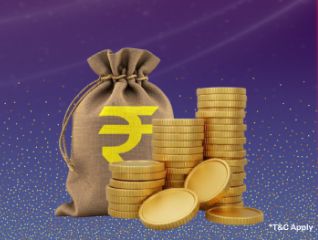Everything You Need to Know About Gold Futures
Understanding gold futures and their impact on gold rates in India
Gold has always been more than just a shiny metal. For centuries, it has stood as a symbol of wealth, tradition, and trust. In India, gold is not only loved for its cultural value but also seen as a safe investment. With India being one of the biggest consumers and importers of gold, the buzz around its future and changing prices always grabs attention. One interesting way of looking at gold’s future is through gold futures. These are agreements traded on exchanges where buyers and sellers lock in a price for gold to be delivered at a later date. Gold futures are not just contracts—they reflect market expectations and can hint at where prices might be headed. In this article, we will explore what gold futures are, why they matter, and how they help in understanding gold rate movements.
What are gold futures?
Gold futures are set agreements traded on exchanges, where the buyer commits to receiving a defined amount of gold from the seller at a prearranged price on a future date. Gold futures play a pivotal role in understanding the potential trajectory of gold rates. This financial instrument provides insights into market expectations and can be indicative of future price movements.
Understanding gold futures and how they work
Gold futures are financial contracts in which buyers agree to purchase a specific quantity of gold at a predetermined price on a future date. Unlike physical gold, these contracts are traded on commodity exchanges, allowing investors to speculate on price movements without holding the metal. The gold future price fluctuates based on market factors such as inflation, interest rates, global demand, and economic stability.
One of the key advantages of gold futures investing is the ability to hedge against market risks. Traders use these contracts to protect their portfolios from price volatility or to profit from anticipated price changes. Since gold futures are standardised and regulated by exchanges, they offer transparency and liquidity, making them a popular investment choice.
Understanding what is gold futures is essential for investors looking to diversify their portfolios. It provides a cost-effective way to participate in the gold market without the hassles of physical storage or security concerns. However, gold futures trading involves risks, as prices can be unpredictable due to geopolitical and economic developments. By analysing market trends and using appropriate risk management strategies, investors can optimise their returns and make informed trading decisions in the ever-changing gold market.
Thinking of applying for a gold loan? Start with a simple step—check your gold loan eligibility today.
Why invest in gold futures in India?
Investing in gold futures in India is a smart way to track gold price movements without actually buying physical gold. Here is what you need to know:
- No physical gold needed: Gold futures are contracts that let you invest in gold’s price changes without storing jewellery or coins.
- Hedge against uncertainties: Traders use them to protect against inflation, currency ups and downs, and global economic shifts.
- Factors influencing price: Gold future prices move based on global demand, central bank decisions, and geopolitical events.
- Leverage advantage: With a smaller investment, you can take a bigger position and potentially earn higher returns.
- Transparency and liquidity: Since gold futures are traded on exchanges, prices are clear and transactions are smooth.
- Know the risks: Prices can swing fast, so risk management is key to avoid heavy losses.
- Opportunity for informed investors: With good research and smart strategies, gold futures can open up rewarding possibilities in India.
Factors affecting gold futures and gold rates
Numerous factors impact both gold futures and gold rates:
- Geopolitical tensions – Uncertainty caused by conflicts, trade disputes, or political instability often drives investors towards gold futures as a safe-haven asset, increasing demand and prices.
- Economic indicators – Key data such as GDP growth, employment rates, and manufacturing output influence gold rates. A slowdown in the economy often pushes investors towards gold futures in India.
- Interest rates – Lower gold loan interest rates reduce the opportunity cost of holding gold, making gold futures investing more attractive. Conversely, higher rates can decrease gold demand.
- Inflation impact – Rising inflation erodes currency value, prompting investors to hedge with gold futures, increasing demand and prices.
- US dollar strength – A weaker US dollar makes gold cheaper for foreign investors, boosting gold future price, whereas a stronger dollar often reduces demand.
- Market sentiment – Investor behaviour, including speculative trading and risk appetite, plays a crucial role in gold futures price movements.
- Central bank policies – Actions by the Reserve Bank of India (RBI) and the US Federal Reserve, such as monetary easing or tightening, impact gold rates and gold futures investing.
Understanding these factors is essential for making informed decisions in the gold market, ensuring better risk management and investment strategies.
How to trade gold futures in India
Trading gold futures in India involves buying and selling contracts for gold on commodity exchanges like the Multi Commodity Exchange of India (MCX). To begin, an investor needs to open a trading account with a registered broker that provides access to the futures market. Once the account is set up, traders can monitor the gold future price, which fluctuates based on economic indicators and market conditions, and place buy or sell orders accordingly.
One of the key features of gold futures trading is the use of leverage, allowing investors to control a larger position with a smaller initial investment. However, while leverage can magnify returns, it also increases the risk of losses. It’s essential for traders to have a solid understanding of market trends and factors influencing the price of gold, such as inflation, interest rates, and the strength of the rupee.
Before diving into gold futures investing, it’s important to understand the mechanics of these contracts, including their expiry dates and settlement processes. By keeping track of market developments and employing risk management techniques like stop-loss orders, investors can make informed decisions and maximise their chances of success in the gold futures market in India.
Risks involved in gold futures trading
Gold futures trading, like any investment, involves several risks. The gold future price can be highly volatile, influenced by various factors, including geopolitical events, economic reports, and market speculation. For example, political instability or global economic downturns can cause sharp fluctuations in gold prices. Investors trading in gold futures need to be prepared for these sudden changes, as they can result in significant losses if not properly managed.
One of the main risks in gold futures investing is market risk, where price movements are unpredictable. Additionally, leveraging trades, which is common in futures markets, can amplify both gains and losses. While this offers the potential for higher returns, it also increases the likelihood of substantial financial loss if the market moves unfavourably.
Other risks include liquidity risk, where traders may struggle to enter or exit positions at desired prices, and credit risk, where the counterparty may fail to meet their obligations. To mitigate these risks, investors should use proper risk management strategies, such as setting stop-loss orders, diversifying their portfolios, and staying updated on global market trends. Understanding what gold futures is crucial before engaging in this type of trading.
Turn your gold into instant support—handle any expense with ease. Check your gold loan eligibility and access funds when you need them most.
Gold futures market analysis for India
The gold futures market in India is influenced by multiple factors, both domestic and global. Understanding these influences is essential for traders looking to make informed decisions. The gold future price is impacted by economic indicators, inflation rates, the value of the rupee, and global gold demand. Events such as changes in central bank policies, political instability, or fluctuations in the US dollar can also cause significant shifts in the market.
For traders in India, staying updated on the gold rate in future in India is key to forecasting potential price movements. The gold futures market can be analysed using various tools, including technical analysis, charts, and historical data. These methods help investors predict future trends based on past performance and market patterns.
Market sentiment also plays an important role in determining gold prices. Investor sentiment, driven by factors like economic reports or geopolitical risks, can lead to rapid price changes. By closely monitoring both domestic and international factors, investors can gain insights into market direction and make smarter decisions when trading gold futures in India. Understanding market analysis is crucial for effective gold futures investing in this dynamic and fast-paced market.
Tax implications of gold futures trading in India
Gold futures trading in India has specific tax implications that investors must understand to ensure compliance and optimise their tax liabilities. In India, profits from gold futures trading are classified as capital gains. If the contracts are held for less than three years, any profits are considered short-term capital gains and are taxed at a rate of 15%. This is a flat tax rate applied to all short-term capital gains from futures trading, irrespective of the investor's income bracket.
If gold futures are held for more than three years, the profits are subject to long-term capital gains tax, which is taxed at 20% with the benefit of indexation. Indexation adjusts the purchase price for inflation, reducing the taxable profit and, consequently, the tax liability.
In addition to capital gains tax, traders must also be aware of Goods and Services Tax (GST) on the transaction value. This is applicable on the trading fees and may vary depending on the type of transaction. Investors involved in gold futures trading should maintain accurate records of their transactions and consult tax professionals to ensure compliance with the tax regulations in India. Understanding these tax implications is crucial for effective gold futures investing.
Gold futures price prediction and trends in India
Predicting the gold rate in India is complex, as it is influenced by multiple economic and global factors. Experts rely on economic indicators, central bank policies, inflation rates, and global market trends to analyse potential price movements. However, these forecasts are not always accurate, as gold prices can fluctuate due to unforeseen geopolitical or economic events. Investors should exercise caution and not rely solely on predictions when making financial decisions.
Staying informed about today’s gold rate in India is crucial for making well-planned investments. Tracking daily price changes helps investors understand market trends and identify favourable buying or selling opportunities. Additionally, factors like demand-supply dynamics, the US dollar’s strength, and interest rates significantly impact gold prices.
For both short-term traders and long-term investors, monitoring gold rate fluctuations ensures better risk management and financial planning. By considering multiple factors and staying updated, investors can make informed decisions in the ever-changing gold market.
Investing in gold futures
Gold futures represent a dynamic and promising avenue for investors and traders looking to diversify their portfolios and capitalise on the precious metal's price movements. By understanding the mechanics of gold futures and keeping a close eye on gold rates, market participants can make well-informed decisions to navigate the exciting world of commodities trading effectively. However, it is crucial to remember that like any investment, gold futures involve risks, and proper risk management is key to successful trading in this market.
Ready to unlock the value of your gold? Apply for Bajaj Finserv Gold Loan today.
Related Articles
Disclaimer
Bajaj Finance Limited has the sole and absolute discretion, without assigning any reason to accept or reject any application. Terms and conditions apply*.
For customer support, call Personal Loan IVR: 7757 000 000









 Personal Loan
Personal Loan Check Eligibility
Check Eligibility Salaried Personal Loan
Salaried Personal Loan EMI Calculator
EMI Calculator Account Aggregator
Account Aggregator Credit Pulse Report
Credit Pulse Report
 Deals starting @99
Deals starting @99 Min. 50% off
Min. 50% off
 Bajaj Pay
Bajaj Pay Wallet to Bank
Wallet to Bank
 Easy EMI Loan
Easy EMI Loan Savings Offer
Savings Offer Smartphones
Smartphones Led TVs
Led TVs Washing Machines
Washing Machines Laptops
Laptops Refrigerators
Refrigerators Air Conditioner
Air Conditioner Air Coolers
Air Coolers
 Loan Against Shares
Loan Against Shares Loan Against Mutual Funds
Loan Against Mutual Funds Loan Against Insurance Policy
Loan Against Insurance Policy ESOP Financing
ESOP Financing Easy EMI Loan
Easy EMI Loan Two-wheeler Loan
Two-wheeler Loan Loan for Lawyer
Loan for Lawyer Industrial Equipment Finance
Industrial Equipment Finance Industrial Equipment Balance Transfer
Industrial Equipment Balance Transfer Industrial Equipment Refinance
Industrial Equipment Refinance Personal Loan Branch Locator
Personal Loan Branch Locator Used Tractor Loan
Used Tractor Loan Loan Against Tractor
Loan Against Tractor Tractor Loan Balance Transfer
Tractor Loan Balance Transfer Flexi
Flexi View All
View All
 Two-wheeler Loan
Two-wheeler Loan Bike
Bike Scooter
Scooter Electric Vehicle
Electric Vehicle Best Sellers
Best Sellers Popular Brands
Popular Brands

 Trading Account
Trading Account Open Demat Account
Open Demat Account Margin Trading Financing
Margin Trading Financing Share Market
Share Market Invest in IPO
Invest in IPO All stocks
All stocks Top gainers
Top gainers Top losers
Top losers 52 week high
52 week high 52 week low
52 week low Loan against shares
Loan against shares
 Home Loan
Home Loan Transfer your existing Home loan
Transfer your existing Home loan Loan against Property
Loan against Property Home Loan for Salaried
Home Loan for Salaried Home loan for self employed
Home loan for self employed Loan Against Property Balance Transfer
Loan Against Property Balance Transfer Home Loan EMI Calculator
Home Loan EMI Calculator Home Loan eligibility calculator
Home Loan eligibility calculator Home Loan balance transfer
Home Loan balance transfer View All
View All
 Term Life Insurance
Term Life Insurance ULIP Plan
ULIP Plan Savings Plan
Savings Plan Family Insurance
Family Insurance Senior Citizen Health Insurance
Senior Citizen Health Insurance Critical Illness Insurance
Critical Illness Insurance Child Health Insurance
Child Health Insurance Pregnancy and Maternity Health Insurance
Pregnancy and Maternity Health Insurance Individual Health Insurance
Individual Health Insurance Low Income Health Insurance
Low Income Health Insurance Student Health Insurance
Student Health Insurance Group Health Insurance
Group Health Insurance Retirement Plans
Retirement Plans Child Plans
Child Plans Investment Plans
Investment Plans
 Business Loan
Business Loan Secured Business Loan
Secured Business Loan Loan against property
Loan against property Loans against property balance transfer
Loans against property balance transfer Loan against shares
Loan against shares Home Loan
Home Loan Loans against mutual funds
Loans against mutual funds Loan against bonds
Loan against bonds Loan against insurance policy
Loan against insurance policy
 Apply for Gold Loan
Apply for Gold Loan Transfer your Gold Loan with Us
Transfer your Gold Loan with Us Gold Loan Branch Locator
Gold Loan Branch Locator
 ULIP Plan
ULIP Plan Savings Plan
Savings Plan Retirement Plans
Retirement Plans Child Plans
Child Plans Free Demat Account
Free Demat Account Invest in Stocks
Invest in Stocks Invest in IPO
Invest in IPO Margin Trading Facility
Margin Trading Facility Fixed Deposit Branch Locator
Fixed Deposit Branch Locator
 Check your Credit Score
Check your Credit Score
 New Car Loan
New Car Loan Used Car Loan
Used Car Loan Loan Against Car
Loan Against Car Car Loan Balance Transfer and Top-up
Car Loan Balance Transfer and Top-up My Garage
My Garage
 Get Bajaj Prime
Get Bajaj Prime
 Mobiles on EMI
Mobiles on EMI Electronics on EMI Offer
Electronics on EMI Offer  Iphone on EMI
Iphone on EMI LED TV on EMI
LED TV on EMI Refrigerator on EMI
Refrigerator on EMI Laptop on EMI
Laptop on EMI Kitchen appliances on EMI
Kitchen appliances on EMI Washing machines
Washing machines
 Personal Loan EMI Calculator
Personal Loan EMI Calculator Personal Loan Eligibility Calculator
Personal Loan Eligibility Calculator Home Loan EMI Calculator
Home Loan EMI Calculator Home Loan Eligibility Calculator
Home Loan Eligibility Calculator Good & Service Tax (GST) Calculator
Good & Service Tax (GST) Calculator Flexi Day Wise Interest Calculator
Flexi Day Wise Interest Calculator Flexi Transaction Calculator
Flexi Transaction Calculator Secured Business Loan Eligibility Calculator
Secured Business Loan Eligibility Calculator Fixed Deposits Interest Calculator
Fixed Deposits Interest Calculator Two wheeler Loan EMI Calculator
Two wheeler Loan EMI Calculator New Car Loan EMI Calculator
New Car Loan EMI Calculator Used Car Loan EMI Calculator
Used Car Loan EMI Calculator All Calculator
All Calculator Used Tractor Loan EMI Calculator
Used Tractor Loan EMI Calculator
 Hot Deals
Hot Deals Clearance Sale
Clearance Sale Kitchen Appliances
Kitchen Appliances Tyres
Tyres Camera & Accessories
Camera & Accessories Mattresses
Mattresses Furniture
Furniture Watches
Watches Music & Audio
Music & Audio Cycles
Cycles Mixer & Grinder
Mixer & Grinder Luggage & Travel
Luggage & Travel Fitness Equipment
Fitness Equipment Fans
Fans
 Personal Loan for Doctors
Personal Loan for Doctors Business loan for Doctors
Business loan for Doctors Home Loan
Home Loan Secured Business Loan
Secured Business Loan Loan against property
Loan against property Secured Business Loan Balance Transfer
Secured Business Loan Balance Transfer Loan against share
Loan against share Gold Loan
Gold Loan Medical Equipment Finance
Medical Equipment Finance
 Smart Hub
Smart Hub ITR Service
ITR Service Digi Sarkar
Digi Sarkar
 Savings Offer
Savings Offer Easy EMI
Easy EMI Offer World
Offer World 1 EMI OFF
1 EMI OFF New Launches
New Launches Zero Down Payment
Zero Down Payment Clearance Sale
Clearance Sale Bajaj Mall Sale
Bajaj Mall Sale
 Mobiles under ₹20,000
Mobiles under ₹20,000 Mobiles under ₹25,000
Mobiles under ₹25,000 Mobiles under ₹30,000
Mobiles under ₹30,000 Mobiles under ₹35,000
Mobiles under ₹35,000 Mobiles under ₹40,000
Mobiles under ₹40,000 Mobiles under ₹50,000
Mobiles under ₹50,000
 Articles
Articles
 Overdue Payments
Overdue Payments Other Payments
Other Payments
 Document Center
Document Center Bank details & Documents
Bank details & Documents Tax Invoice Certificate
Tax Invoice Certificate
 Do Not Call Service
Do Not Call Service
 Hamara Mall Orders
Hamara Mall Orders

 Fixed Deposit (IFA) Partner
Fixed Deposit (IFA) Partner Loan (DSA) Partner
Loan (DSA) Partner Debt Management Partner
Debt Management Partner EMI Network Partner
EMI Network Partner Became a Merchant
Became a Merchant Partner Sign-in
Partner Sign-in
 Trade directly with your Demat A/c
Trade directly with your Demat A/c ITR
ITR My Garage
My Garage
 Live Videos - Beta
Live Videos - Beta
 Savings Offer
Savings Offer Smartphones
Smartphones LED TVs
LED TVs Washing Machines
Washing Machines Laptops
Laptops Refrigerators
Refrigerators Air Conditioners
Air Conditioners Air Coolers
Air Coolers Water Purifiers
Water Purifiers Tablets
Tablets Kitchen Appliances
Kitchen Appliances Mattresses
Mattresses Furniture
Furniture Music and Audio
Music and Audio Cameras & Accessories
Cameras & Accessories Cycle
Cycle Watches
Watches Tyres
Tyres Luggage & Travel
Luggage & Travel Fitness Equipment
Fitness Equipment Tractor
Tractor Easy EMI Loan
Easy EMI Loan
 vivo Mobiles
vivo Mobiles OPPO Mobiles
OPPO Mobiles Xiaomi Mobiles
Xiaomi Mobiles Sony LED TVs
Sony LED TVs Samsung LED TVs
Samsung LED TVs LG LED TVs
LG LED TVs Haier LED TVs
Haier LED TVs Godrej Refrigerators
Godrej Refrigerators Voltas Washing Machines
Voltas Washing Machines
 New Tractor Loan
New Tractor Loan Used Tractor Loan
Used Tractor Loan Loan Against Tractor
Loan Against Tractor Tractor Loan Balance Transfer
Tractor Loan Balance Transfer
 New Car Loan
New Car Loan New Cars Under ₹10 Lakh
New Cars Under ₹10 Lakh New Cars – ₹10–₹15 Lakh
New Cars – ₹10–₹15 Lakh New Cars – ₹15–₹20 Lakh
New Cars – ₹15–₹20 Lakh New Cars – ₹20–₹25 Lakh
New Cars – ₹20–₹25 Lakh New Car Brands
New Car Brands Petrol – New Cars
Petrol – New Cars Diesel – New Cars
Diesel – New Cars Electric – New Cars
Electric – New Cars CNG – New Cars
CNG – New Cars Hybrid – New Cars
Hybrid – New Cars






